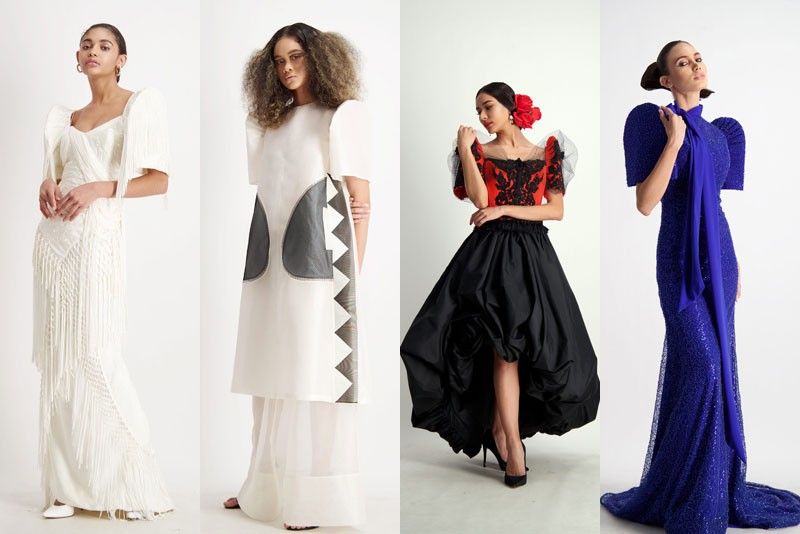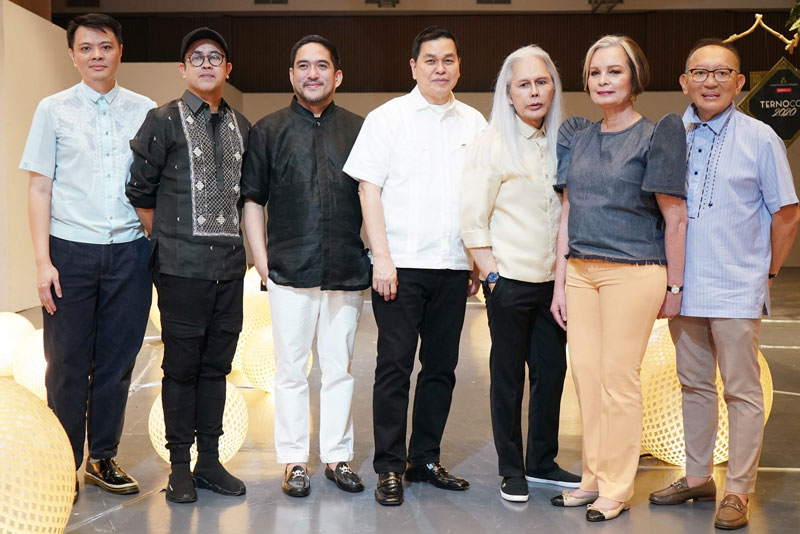Ternocon 2020 brings people together

MANILA,Philippines — You can’t always count on every execution to be A+ when something goes on trend. Such is the case of the terno enjoying a second wave of popularity, a splash that has rippled beyond the confines of the State of the Nation Address red carpet since the magnificent staging of Bench and Cultural Center of The Philippines’ Ternocon last year at the CCP.
But the terno is not just any old silhouette. It’s our national dress. The Filipiniana dress code of a top TV network’s recent celebrity ball is a case in point. When done right, just looking at the A-list actresses standing tall with the proper butterfly sleeve proportions, it’s sublime. Yet the execution went in two directions. It is fashion with undeniable cultural value. It will be a reference for ternos to come, even the bad ones. This underscores the importance of holding the biennial Ternocon, especially now that the national dress has got everyone’s attention.
At the recent Ternocon 2020 press preview, Bench founder Ben Chan spoke about how this movement unites: “What amazed me about Ternocon is its ability to bring people together from all walks of life, including the hands that make the terno what it is — artisans, embroiderers, beaders, weavers. It creates dialogue among designers, and between students and mentors, Bench and Cultural Center of the Philippines, between the local government and the design community. When Chan says “Love Local,” referring to the influential Filipino fashion campaign his retail company pioneered, “It means we love ourselves, our identity, and who we are as a culture. It may be a competition but if you look deeper, it’s a cooperation.”
“Our efforts resulted in more bureaucrats and celebrities wearing the terno, but it also led to some misinterpretations,” CCP chairperson Margie Moran Floirendo cautions. “This is why we will further our initiatives to push for the proper understanding of the institute of the terno as this is the only way we can ensure the preservation, appreciation and promotion of the Philippine national dress.”

Ternocon project director Gino Gonzales is all about bringing the terno beyond the fashion and society crowd. At the last Ternocon, the aptly-dressed audience were made to feel like a part of the show as we joined the models on the CCP Main Theater stage, while chief mentor Inno Sotto’s dreamy, grandiose interpretations floated on the seats. Consistent with the goal to reach more Filipinos, Ternocon has toured SM malls, and will invite a bigger audience for the main event. “We’re hoping to extend the stage beyond the proscenium opening, so that the audience can get a closer look,” he reveals.
Inno is back as chief mentor. “The last two and a half years, the trend in fashion was to appreciate artisanal things and I thought the terno was going to be overlooked because everybody was going more ‘tribal,’ regardless of the region, but now I like that all of a sudden, there’s now this interest in the terno as women’s wear in so many versions after the first Ternocon. It is encouraging,” he says.
One of the past Ternocon mentors, JC Buendia, says, “It was a turning point for me. I have been designing ternos as formalwear for years, yet after the last Ternocon, it became everyday wear!”
The Ternocon 2020 mentors Lesley Mobo, Philip Rodriguez and Ivar Aseron, who have been mentoring one contestant from each archipelago since April, and Ternocon 2018 grand winner Marlon Tuazon will each show a 10-piece collection and present one look during the presscon.
London-based Lesley had been busy with the Fashion Weeks and mentoring his contestants, so he designed what came to him instinctively. “I worked with the mantilla. You think it’s Spanish, but when you look closer, it looks oriental. With terno as the silhouette, it’s a perfect representation of what a modern Filipino is. We are an amalgamation of Spanish, Chinese and Japanese influences. I chose white because it is a canvas. The Filipina can be someone who is malleable, such as the model Hannah Locsin walking for Gucci.”
He continues, “It’s romantic. I leave the intellectual (critique) to the young designers. When you’re young, it’s your job to question things. That’s what I did. It’s their job to rebel.” Lesley recently questioned the trust-based system of borrowing merchandise among Filipino designers and stylists.
As for his thoughts on the recent celebrity terno interpretations? “A leg of mutton really is not a terno, nor is doing animal prints endemic to the Philippines. We need young blood in the industry that understands what Filipiniana terno really is and create more content than style that has cultural and lasting power until the next generation. Celebrity dressing is created for social media.”
Cebu-based Philip comes from a more occasion-based way of wearing the terno. He says of his first look, “I want to establish that you can wear the terno separately as a bolero. Remove it and it becomes a new thing and you can go to your next event. Cebu is still catching up in terms of terno as everyday wear, especially for the younger generation, unlike in Manila.”
His red-and-black silk taffeta, double-face satin, and tulle look with tassels is decidedly flamenco-inspired. “I designed with Spain in mind for the celebration of the 500th anniversary of the Spanish ‘discovery’ of the Philippines in 2021. It also marks the Filipino victory in killing Magellan and 500 years of Christianization.”
Ivar, who wasn’t able to make it to the presscon, made his presence felt with a modernist white two-piece terno comprising a crew-neck tunic and wide-legged trousers with black sheer panels in patterns typically found in traditional Filipino weaves, topped off with starkly contrasting buttons down the tunic’s back.
Marlon’s full-length, sparkling Yves Klein blue Paulette terno gown with a scarf neckline is inspired by the folk song Bituin Marikit. “The somber, almost-lullaby melody is captured through the color. The gown is like a star-studded sky. At the center of it, the wearer, the maiden who captures the spectators’ eyes, the Filipino,” he describes.
Now back to the contestants. According to Gino, the kids are all right. The millennial roster of Ternocon 2020, he comments, “are very cerebral and detail-oriented. Definitely more quiet than the last batch where it was like Eat Bulaga every day.”
Gino began planning this second edition as early as December 2018. Ternocon opened a forum to emerging Filipino designers, such a talented batch of applicants that they had to add two more to the 12 they initially planned. The contestants will each present a three-piece terno collection; concept is up to them, as long as the codes of the terno are respected.
Lesley says of the contestants: “There are really strong women designers so I’m betting on them to win. It’s a nice mix to have girls. I was pleased to have them this time because the industry is male-dominated. It is refreshing to see women doing tailoring and men designing romantic, softer stuff. The millennials have a short attention span, but they’re quick and creative. You have to rub them to stop and release.”
The contestants are a mix of experienced designers who are already running their own businesses, those in big fashion houses, some who’ve competed in design competitions or represented the country in fashion events abroad, as well as fresh graduates with not a lot of work experience in fashion but who are definitely not lacking in vision and skill. Their collections will be unveiled on Ternocon 2020, Jan. 26 at the CCP Main Theater.
* * *
Follow @ternocon_2018 on Instagram for updates.


















